#pearlwort
Text
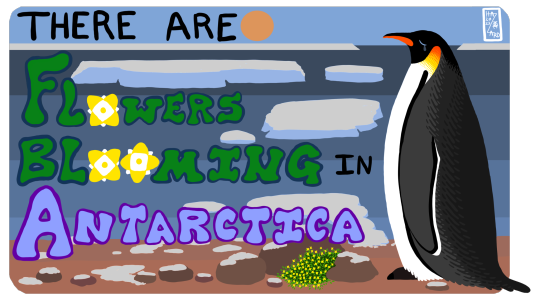
Kept seeing this quote and some variation of it, so I felt like drawing something to fit the vibe.
One of the flowering plants that I chose is the “Antarctica Pearlwort” I also chose an emperor penguin since they were the most affected by the ice melt this yr, losing over 10,000 chicks in a colony.
#art#digital art#bird#penguin#emporer penguin#emporer#glacier#antarctica#antarctic pearlwort#flowers are blooming in Antarctica#flowers blooming#flowers#flower#pearlwort#animal art
19 notes
·
View notes
Text

Scottish Folklore for Pearlwort
In historical Scottish folklore, Pearlwort (Mungan or Mòthan) was said to have both healing and protective properties; especially against the supernatural. This included the attacks from fairies, the evil eye, and even the dead.
"Placed on the lintel of the door (san àrd dorus), it kept the spirits of the dead, if they returned, from entering the house. If in the bull’s hoof, at the time of being with the cow, the offspring’s milk could not be taken away by witches. When placed below the right knee of a woman in labour, it defeated the machinations of the fairy women. "
"Witchcraft & Second Sight in the Highlands & Islands of Scotland" by John Gregorson Campbell(1902)
What made it so protective is it's ability to stop any sort of supernatural interference. In a time when many problems might be blamed on that, it was common for the plant to be used to help induce labor in humans, to help a cow regain it's ability to produce milk, or even to ward of unwanted love-struck fairies
In one story, a fairy was flirting with a girl while she was supposed to be milking the cattle. She would stay out all night with him, but when questioned by her parents, she would blame it on the livestock not wanting to come to her. When this continued, an old man followed her as a favour for the worried parents. When he did, he saw the girl sitting in the heather with a man he suspected might not be human. So, he advised the girl to put pearlwort under her belt, and to not say a word to the fairy.
She agreed, and the pearlwort prevented the fairy from being able to touch her.
"And she got the animals and milked the animals, and when she returned, he was in the same place sitting waiting for her. And she didn't look in his direction and continued. And he called after her, and she didn't pretend to hear him. And he shouted again after her and she didn't turn and didn't pretend to hear him.
And he stood up then and called after her:
"O girl, that wise girl," he said, "Who put the pearlwort under your belt? If this were yesterday you wouldn't have found out."
And she didn't say a word. "
Track ID: 108577, Tobar An Duelchais
In another story, but this time from from "Superstitions of the Highlands & Islands of Scotland" by John Gregorson Campbell (1900), there is a story about a shephard and his wife living in the hills of Mull. When his wife went into labor, the husband knew he had to get help from the nearest house to help tend to the new mother, but before he left he was careful to set up protections.
His cow had eaten pearlwort, so he put food with the butter of it on the table by the bed. Around the bed and at the window, he placed various items made of iron, and also food made with the butter of a cow that had eaten pearlwort.
As soon as he had left, the wife heard voices chatting about stealing the newborn, only for another to answer "Butter from the cow that ate the pearlwort was on the table, that iron was below the bed, and the ‘reaper’ in the window, how could he get the child away?" So, both baby and mother were safe when the father returned with help.
"To drink the milk of an animal that ate the 'mothan' ensures immunity firom harm. If a man makes a miraculous escape it is said of him, 'Dh'ol e bainne na bo ba a dh' ith am mothan ' — * He drank the milk of the guileless cow that ate the '' mothan."
"Carmina Gadelica" by Alexander Carmichael (1900)
#folklore#mythology#scottishfolklore#scottish folklore#fairies#fairy#scottish mythology#fae#scottish#sain#saining#pearlwort#Mungan#Mòthan#Folkmagic
8 notes
·
View notes
Text
Pearlwort: How to Deal With This Invasive Plant
Pearlwort: How to Deal With This Invasive Plant
Flowering plants are a vital part of any garden. Not only do they look pretty and stunning when in full bloom, but they also attract bees and other pollinators. However, there comes a time in every gardener’s life when they have to deal with an invasive plant.
Not all weeds look like weeds. Some, such as pearlwort (Sagina procumbens), are actually quite pretty. But don’t let its delicate white…

View On WordPress
0 notes
Text

Antarctic Pearlwort (Colobanthus quitensis)
Family: Pink Family (Caryophyllaceae)
IUCN Conservation Status: Unassessed
Brutal cold, intense winds and a lack of terrestrial resource makes Antarctica by far the least biodiverse continent on earth, and while land plants are particularly rare in the area surrounding the south pole, two species of highly specialised flowering plants have managed to survive; a tough, low-growing species of grass called Antarctic Hairgrass, and a small, superficially moss-like relative of campions, chickweeds, stitchworts and pinks; the Antarctic Pearlwort. Found mainly in coastal areas where they typically grow attached to sturdy rocks, members of this species grow low to the ground to avoid being uprooted by wind, possessing thick, waxy leaves to reduce water loss through salt spray, wind and evaporation resulting from sunlight reflected from snow, and produce antifreeze-like proteins in their leaves to prevent their internal stores of water from freezing and damaging their tissues. Although they produce pale yellow flowers Antarctic Pearlworts cannot rely on animal-based pollination (with Antarctica's only insect, the Antarctic Midge, being flightless and spending much of its life underground,) and as such they instead allow their pollen to be carried away by the wind, fertilizing the flowers of other members of their species and allowing for the production of small, waxy fruits (which, in the absence of terrestrial frugivores to swallow them, drop their seeds to germinate wherever they fall.) As anthropogenic climate change causes increases in average temperature across Antarctica, Antarctic Pearlwort populations are rapidly increasing as the conditions around them slowly become more conducive to plant growth. As such, monitoring the population size and current range of this species can provide useful insight into how drastically the earth's poles are changing.
--------------------------------------------------------------------------
Image Source: https://www.inaturalist.org/taxa/428806-Colobanthus-quitensis
#Antarctic Pearlwort#plant#plants#biology#botany#wildlife#Antarctic wildlife#adaptations#Antarctic Plants#wildlife biology#polar wildlife
15 notes
·
View notes
Text

Day 3 - Penguin - Loyalty
Antarctic pearlwort is one of two flowers that grow in, well, Antarctica (and the only one that actually looks like a flower). If that's not a great allegory to "I'll stay here no matter what" I don't know what is.
#Day 3 ღ Penguin ღ Loyalty#one piece#one piece penguin#heart pirates week#old school tattoo#one piece tattoo
90 notes
·
View notes
Text
@agent-a-cpfancomic "getting worse before one gets better" edition!
Where oh god oh man-
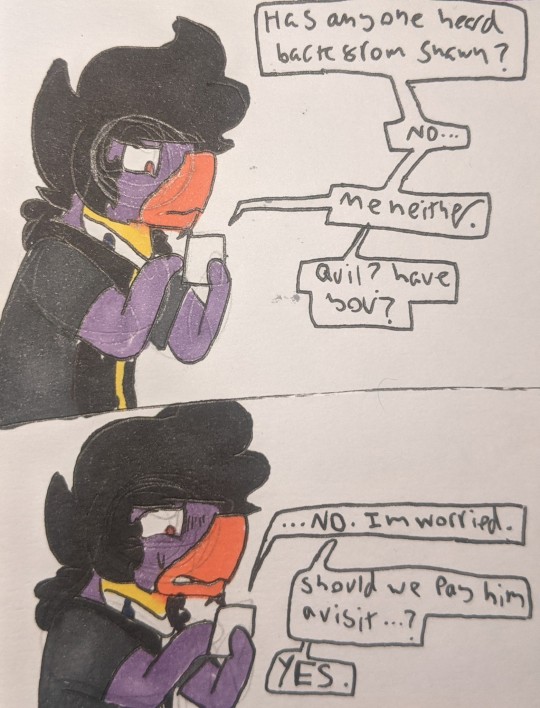
Anna: has anyone heard back from Shawn?
Bonnie: no
Anna: me neither... Quil? Have you?
Quil: no. Im worried it's been a few days.
Anna: should we pay him a visit?
Quil: YES.
The TT texting about being worried because Shawn has not sent them anything or talked in days, the potential reason why is making them anxious
And they have every reason to be
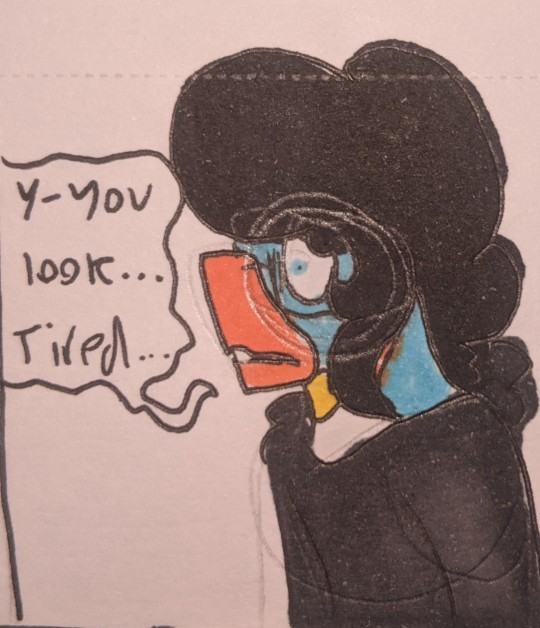
Anna: y-you look...so tired...

Quil: where's Shawn?
Dan: ...so...good and bad news.

Dan: good news is Shawn is still alive.
Quil: o...k. what's the bad news then?
Anna: he's gotten worse hasn't he?
Dan: I...yes he has
Anna: I fucking knew it

Dan: he was muttering about something, fell asleep mid-text, and...we couldn't wake him back up. He's in the hospital right now.
Quil: wh-what...?
Quil and Anna are relieved that Shawn is uh- sorta ok? But at the same time, oh shit the guy lost consciousness a few days ago and hasn't awoken yet, Quil is NOT handling that well aaaaAAA
Suddenly clover-!

Clover: quil...?
Quil: Hey lucky clover! What's up?

Clover: d-did I get pa sick...?
Quil: ohh..no, no no no! You didn't get him sick!

Quil: he got this illness way after you recovered from it! This isn't yours or anyone else's fault!
Clover is naturally worried for her pa, Quil is probably heartbroken that she was blaming herself for getting Shawn sick *crIES*
And the finale!

Jesse: ooh! Pa will like these!
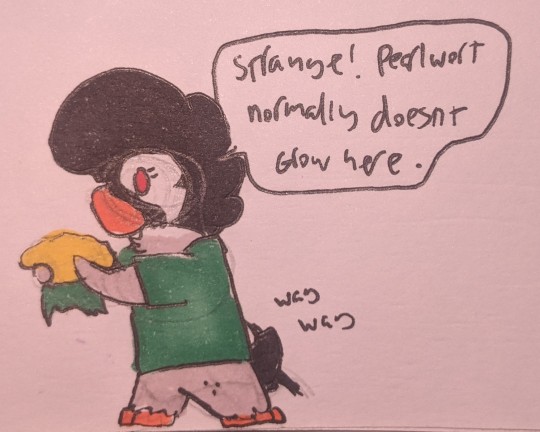
Clover: strange! Antarctic pearlwort normally doesn't grow here.
The twins reactions to flowers, ones blissful unawareness and the other is "huh that's strange" awareness but still being happy she found flowers for her pa
#agent a quil#agent a anna#wildcard dan#shawn#clover#jesse#club penguin ocs#club penguin oc#club penguin
7 notes
·
View notes
Text

Art via @gravelyhumerus, for a writing project I've been working on off and on for the last 15 months. I can strongly recommend her if you're looking to commission art.
On the left is Alicia Martinez (she/her), a US Navy captain who is running a secret UN airbase conducting interceptions of alien aircraft over Antarctica, and who at this specific moment has never been quite so sure of her sexuality; on the right is Alita Rosso (any pronouns), a genderfluid Navy officer serving as Martinez's chief of staff. These are Rosso's quarters, which started life as a converted shipping container, but which some Antarctic pearlwort, a classic Pan Am poster, some alien metal growing over old battle damage, and some nice carpeting definitely helped spruce up!
#gravely humerus#unsdi#alicia martinez#alita rosso#1980s#Antarctica#artblr#art#bisexual characters#genderfluid character
10 notes
·
View notes
Note
Staple food and common dishes
Medical practices
Gardens
Traditional clothes and items
For Winterbeings or Elves
(Have fun love :))
OR more like BOTH MWAHHA I'll reblog and add on the elf portion tomorrow
Winterbeings
Food
To reiterate context snowciety as i like to call it isnt a thing until like decades into the future, so its a given that many humans from many different cultures have been turned into frostbitten.
That being said they'll often recreate many different kinds of dishes only with cannibalistic substitutions.
Though there are also many unique examples
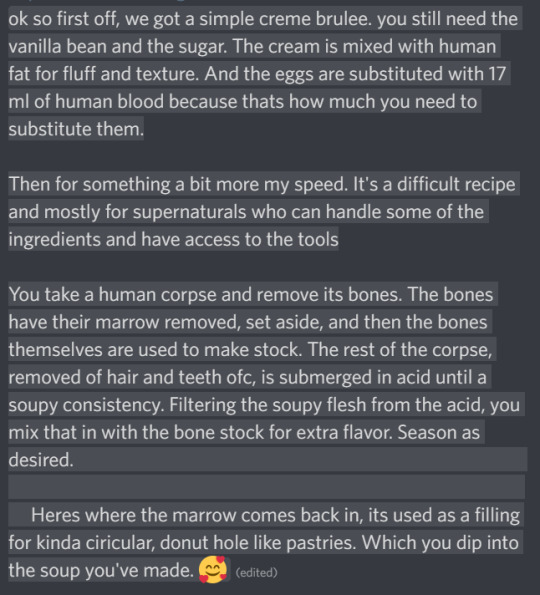
This is only for Winterbeings who prefer their food to be cooked, raw is actually much more beneficial but cooked food isn't harmful. Many will just devour a body bones and all.
Winterbeings get no nutrients from regular human food like vegtables. Animal products can extend energy in an emergency but its a bit like making your dog go vegan, maybe they can survive but they won't be healthy or happy whatsoever
There are groups of Winterbeings who want to be as ethical as possible and despite having no choice but to eat humans want to treat them with respect.
These communities often live intermingled with humans and act as protection and compansionship in exchange for the corpses of those who have passed from natural causes. They'll even leave things like the bones, hair, and teeth for compost and so the families can have keepsakes.
Medical
Being a doctor to winterbeings is quite interesting. You'll note that (as of now) every ailment is either reasonably treatable at home
https://frostcorpsclub.tumblr.com/post/664220220900196352/winterbeing-illnesses-casefile-1
https://frostcorpsclub.tumblr.com/post/669856129099120640/winterbeing-illnesses-casefile-3
https://frostcorpsclub.tumblr.com/post/682792630088826880/winterbeing-illnesses-casefile-4
Or DEADLY AND HORRIFIC
https://frostcorpsclub.tumblr.com/post/666847555176595456/winterbeing-illnesses-casefile-2
Being immortal and nearly indestructable means that, luckily, many diseases were discovered from trial and error experimentations. When you're part of a species that eats bugs and flesh and....garbage for fun, in addition to brutal bloodsport, any non-self afflicated pain is taken very seriously.
Gardens
this is gonna be a short one for...obvious reasons
The "native" population of Winterbeings is located in Marie Byrd Land on the continent of Antarctia meaning that gardens are esentially impossible there.
However, there are some options. For those living on the antarctic islands or pennisula nearby can enjoy the small green pleasures of hairgrass, lichens and pearlwort. The latter being favored and common for wedding bouquets.

Traditional Clothes and Items
These fuckers make the most useless winter clothes you'll ever wear in your life. They really enjoy the aesthtetics of fur lined coats, pants, and boots but the fuctionality of these would be a detriment to their own survival. So these are often made from very thin and breathable material.
On the other hand, for those living in places where it gets hot, Frostbitten at least have to dress even less in the summer months. This can be difficult for those who have integrated into more conservative socieites and some chose to go into a hiberntation like period of hiding during the summer.
On the other hand Winterbeings are incredible weapon makers. Since 50% of their species is inhumanly large, along with the fact theres a lot of power behind their swings, weapons being proportional and well made is a necessity.
There are also weapons made to compliment a winterbeing's special ability. For example a snowperson with the power of Ice infusion might have a weapon thats made to inject poison, giving them an extra danger in battle.
#mkswinterbeings#mksfrostbitten#mkssnowpeople#lore#oc lore#universe lore#worldbuilding#cw cannibalism#tw cannibalism#cannibalism ment#winterbeinglore
10 notes
·
View notes
Photo

Vagas e fcs no APPCOUNT:
2º filho da Itália + Logan Lerman = Ezio Tommaso Passano
4ª filha da Turquia + Aslihan Malbora = Elçin Baytekin
1º filho da Inglaterra + Drew Starkey = Alexander Louis Grosvenor
1/15 telekis + Chloe Bennet = Saori Karma Yu
2/15 telekis + Kieron Moore = Dragos Vesemir Fidatov Galca
1/15 Oráculo + Hande Erçel = Beyza Sofiya Demir
1º filho do Egito + Keith Powers = Karim Sharaf
1/15 Corporalki + Marina Ruy Barbosa = Memphys Pearlwort
1/15 Illusio + Danille Rose Russell = Lilith Amaya Devereaux
1 note
·
View note
Text
"flowers are blooming in Antarctician" no fucking shit they are, Antarctician has a native wildflower population Antarctician isn't winter 24/7 365 they have season cycles down there like how the entire rest of the fucking world does

Antarctic pearlwort a native wildflower of Antarctician

this photo was registered as taken in Greenland
#flowers are blooming in antarctica.#use your brains for like a minute please#critical thinking skills
1 note
·
View note
Text
A Beautiful and Unique Addition to Your Floral Arrangements
Irish moss plant (Sagina subulata) is a low-growing, evergreen groundcover that is native to Europe, Asia, and North America. It is a member of the carnation family (Caryophyllaceae) and is also known as pearlwort, Scotch moss, and creeping thyme.
Irish moss plant has small, needle-like leaves that are arranged in opposite pairs. The leaves are a bright green color and have a slightly waxy texture. The plant produces small, white flowers in the spring and summer.
Irish moss plant is a popular choice for groundcover because it is low-maintenance and can tolerate a variety of conditions. It is also a good choice for rock gardens and other areas where there is limited soil.
In addition to its use as a groundcover, Irish moss plant can also be used in floral arrangements. The delicate leaves and small flowers of the plant add a touch of texture and interest to arrangements.
Here are a few tips for using Irish moss plant in floral arrangements:
Use Irish moss plant as a filler to add volume and texture to arrangements.
Use Irish moss plant to create a natural, moss-like effect in arrangements.
Use Irish moss plant to add a touch of green to arrangements.
Irish moss plant is a beautiful and unique addition to any floral arrangement. The delicate leaves and small flowers of the plant add a touch of texture, interest, and natural beauty to arrangements.
If you are looking for a unique and beautiful way to add a touch of nature to your floral arrangements, Irish moss plant is a perfect choice.
0 notes
Text
Abstract
The intergenic spacer (IGS) of 5S ribosomal RNA genes (5S rDNA) (that are present in the genome of all living organisms) is characterized by a high variability, due to which it is a convenient and widely used object for clarifying the issues of genome evolution, population genetics, systematics, etc. The aim of this work was to study the IGS of 5S rDNA of the Antarctic pearlwort Colobanthus quitensis. The nucleotide sequence was determined by the methods of molecular genetic analysis, and molecular organization of the C. quitensis 5S rDNA IGS was studied. It was demonstrated that it contains the regulatory elements typical for other vascular plants. The existence of at least two classes of 5S rDNA repeats in the individual genome (that differ significantly in the length and nucleotide sequence of IGS) was established. In addition, based on differences in the length and nucleotide sequence, two subclasses of repeats with a long IGS and three subclasses with a short IGS were identified. A comparison of 5S rDNA IGS sequences in C. quitensis and Silene latifolia Poir. (a member of another section of the Caryophyllaceae family) demonstrated significant differences in the structure of a spacer region of 5S rRNA genes (except for its parts containing regulatory elements). In general, data obtained indicate a significant level of intragenomic polymorphism of C. quitensis 5S rDNA IGS.
0 notes
Text
Random Real Thoroughbred: ELFWORT
ELFWORT is a mare born in Great Britain in 1966. By ELF-ARROW out of PEARLWORT.
Link to their pedigreequery page: https://www.pedigreequery.com/elfwort
0 notes
Text
Here, only things that flourished survived. Far from the carefully tended decorative beds, cosseted allotments and other meticulously cared-for secondary biotypes. Disc mayweed, hardwearing pearlwort, sly wildrye, stubborn vegetation. It was propagation that secured existence. Complex pollination operations were successful here. It had to happen quickly. Before pesticides could touch them, the weeds had already multiplied. The sticky seeds of the tough-leaved lamb's foot stuck to the sole of everyone's shoes. Sweet brake tossed out its tiny spores. The dandelion let its parachutes sail. Seeds carried on the wind. Shepherd's purse could pollinate itself if need be. The plants themselves, however, had no plans to move. They had no choice but to stay where they were. And they made the best of it. They infiltrated any free areas, occupied unusued interstices, germinated in pavement cracks, in masonry fissures, rooted in the dirty earth of the piles of rubble, dug into the spilled remains of earlier constructions. Lime, cement, mortar. They didn't care. On the contrary. Even the driest, most calcareous soil was fertile enough for the hard-nosed representatives of the green front.
Sprouting plants were underestimated. Even as a student she hadn't been able to warm to greenery. Servile toilers in the photosynthesis factory. To be defined in countless scientific exercises. It was always a matter of counting. How many leaves they had, how many stamens. Horsetails, ferns and pinewood bracken, gymnosperms, dicotyledons, monocotyledons, legumes and brassicas, mints and asters. Alternate, basal and decussate. Fruit. Food, medicine, ornament. The individual organs of photosynthesis. Feeding the circulation, the motor of the metabolism. Plants turned energy-poor materials into energy-rich. Animals did the reverse. We just weren't autotrophic. Day after day, in each little leaf, in every tiny chloroplast, the miracle that kept us all alive occurred. Epidermis, cuticle, spongy mesophyll. If you were green you wouldn't have to eat anything, you wouldn't have to go shopping, you wouldn't have to work. You wouldn't have to do anything at all. You would just have to lie in the sun for a bit, drink some water, absorb carbon dioxide, and everything, really everything, would be fine. Chloroplasts beneath the skin. It would be wonderful!
Mute, patient vegetation. Hats off to it. Plants could communicate without language, and were sensitive to pain even without a nerve system. Supposedly they even had feelings. Perhaps that was why they were superior to us, because they got by without feelings. Some plants had more genes than human beings did. The most promising strategy for the seizure of power lay in being underestimated. Before striking at the right moment. You couldn't ignore the fact that flora lay in wait. In ditches, gardens and greenhouse barracks they waited for their deployment. Soon they would take everything back. With their oxygen-producing tentacles they would take control of the abused territories, defy the weather, burst tarmac and concrete with their roots. Bury the remains of the past civilisation under a solid covering of leaves. It was only a matter of time before everything was returned to its original owners.
Nitrogen-hungry stinging nettles feasting on the stony rubble, where soon the woody stalks of the clematis would form an impenetrable thicket. The ground covered with bracken. With splayed leaves. Half fresh, half rotten. Mushrooms, lichen and mosses that flourished even on tarmac. Spurred on for all eternity. A cloak of silence. Everything already bore within it the seed of future nature, future landscape, future forest. Well-tended parks? Troublesome forestry? A greater power was at work here! No one could stop it. Eventually, in just a few centuries, stately mixed woodland would stand here. And of all the buildings, the church at most would remain, hollowed out, a brick skeleton, a ruin in the forest, like a painting. Wonderful. You had to think bigger, further, beyond the puny human scale. What was time? The Plague, the Thirty Years' War, becoming human, the first fire in the cave of the hominids? It was all just a blink ago. Man was a fleeting protein-based phenomenon. An amazing animal, to be fair, that had afflicted the planet for a short time, and would eventually disappear again. To be replaced by worms, mushrooms and microbes. Or buried under a thick layer of sediment. A funny fossil. Never to be excavated. The plants remained, though. They were there before we were, and they would live on after us. This place was still just a shrinking city, production had been turned off long ago, but the true producers were already at work. This place would not decay, instead it would be overgrown. A proliferating amalgamation, a peaceful revolution. Blossoming landscapes.
— The Giraffe’s Neck (Judith Schalansky), translated by Shaun Whiteside
#book quotes#judith schalansky#shaun whiteside#the giraffe's neck#nature#botany#plants#flowers#trees#grass#forest#fossils#photosynthesis#survival#growth#nourishment#food#eating
1 note
·
View note
Text
the first wildflowers of the spring season have bloomed!
(in my backyard)

❁ pearlwort ❁
they’re technically a weed, but their little petals are so cute
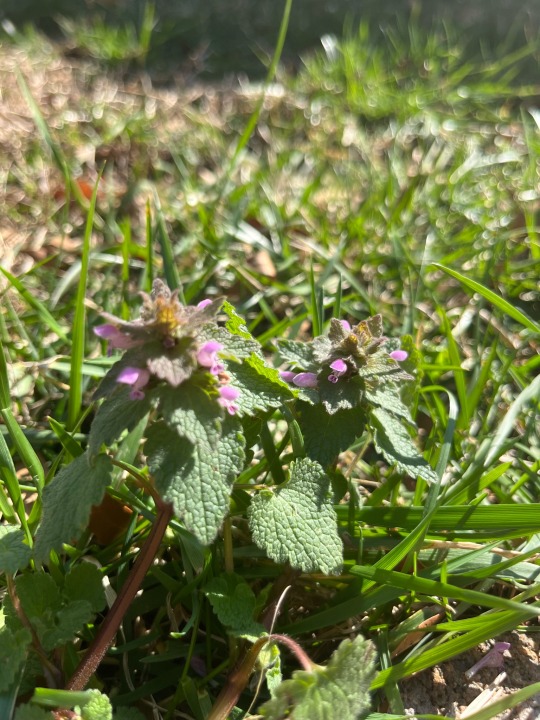
❁ purple deadnettle ❁
also known as red deadnettle, and also technically a weed
the purple flowering part can be used in tea
if you pick the flower and bite the part where it connects to the plant, it tastes a bit like honeysuckle :)

❁ bluets ❁
also known as quaker ladies
they’re my favorite of the wildflowers that grow in my backyard
these ones are growing from the same little clump as last year
#what’s growing? with gwen ✿#wildflowers#spring flowers#spring time#foraging#backyard foraging#flowers#flower identification
1 note
·
View note
Photo

*Chateau Royal Ltd 14% SELLING DISCOUNT VALENTINE OFFER on:* 1. *RUBYFIELD, Epe* Plot Size: 300sqm & 500sqm Actual Price: N2.7 Million *PROMO PRICE: N1.6 Million* Special Offer: *Buy 6 Plots, GET 1 FREE PLOT* 2. *PEARLWORT, Epe* Plot Size: 300sqm & 500qm Actual Price: N2.5 Million *PROMO PRICE: N1.5 Million* Special Offer: *Buy 5 plots, GET 1 FREE PLOT* 3. *MCLAURELS, Epe* Size: 300sqm & 500sqm Actual Price: N2.5 M *PROMO PRICE: N1.6 Million* Special Offer: *Buy 6 Plots, GET 1 FREE PLOT* *Terms and Conditions:* 🔸 On OUTRIGHT PURCHASE Only 🔸 *Discount Offer Valid from 6th -19th of February, 2023* For More Enquiry or Inspection, Please Call/Whatsapp: +2348039222964. https://www.instagram.com/p/CohnvBQKrzy/?igshid=NGJjMDIxMWI=
0 notes